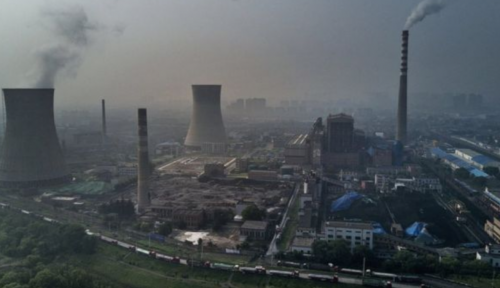As one of Earth’s most abundant natural resources, coal is one of the most used sources for our growing energy demands. As a result, it is important to limit emissions in all stages of converting coal to energy, from processing coal to transporting the usable products. One large portion of the coal conversion process is Coal to Liquid (CTL), or the process of converting solid coal to liquids and usable chemicals.
In the first step of CTL, coal is converted to synthesis gas (also known as syngas), a mixture of carbon monoxide (CO) and hydrogen (H2). Then, in what is known as the Fischer-Tropsch Process, H2O and O2 are introduced to the coal to remove excess carbon monoxide—which then forms carbon dioxide (CO2). This elevated production rate is not economically efficient because the extra CO2 takes up extra space and the separation of CO2 gas and liquid fuel involves recompression and reheating, making this process even more costly.
Researchers from the Eindhoven University of Technology and from the National Institute of Clean-and-Low-Carbon Energy in Beijing set out to find a way to dramatically reduce CO2 emission from the Fischer-Tropsch Process—by testing new catalysts that could remove carbon monoxide without producing carbon dioxide. Previously, researchers looked to cobalt as a potential catalyst, since cobalt catalysts do not produce a lot of CO2 compared to current methods. The heavy usage of cobalt in batteries, however, has rendered the material very expensive and inefficient to use in an industrial process. The researchers then looked at one of the current catalysts that involves iron, but they found it still converts around 30 percent of carbon monoxide into carbon dioxide due to impurities in the catalyst composition.
As a result, they sought a pure form of an iron catalyst and stumbled upon the epsilon (ε) iron carbide catalyst, which is composed of a lattice-like matrix of iron and carbon. This pure iron carbide catalyst — ε(′)-carbide catalyst — is both more stable than the other iron catalyst and has low CO2 selectivity, meaning that it produces minimal amounts of CO2 in the Fischer Tropsch process. This forces the CO2 to be formed in the preceding water-gas shift reaction, where CO2 is much easier to collect and contain.
This new research will have a profound effect on energy plants and will dramatically alter future research in the energy sector. Since this epsilon iron carbide catalyst almost entirely abrogates CO2 production in the conversion of coal to liquid, no extra energy is needed to store and compress the extra volume of CO2 and can decrease costs by roughly 25 million euros per year for a typical CTL plant, according to a press release by Eindhoven discussing the study. Although the clean fuel derived from this coal conversion process is nonrenewable, it is much more durable and feasible, and also reduces the environmental impact of the emission of CO2.

